7 Creative Ways To Track Google Ads Conversions As A Retail Business
Managing an AdWords account for a retail business can be tricky. When your boss wants to know the ROI of your AdWords account, the last thing you want to start spitting back is the impressive click-through rate of your ads. What they really want to know is how much business these ads are actually generating.
Tracking any retail sale from beginning to end proves to be much more difficult when it starts online. So much happens after that initial ad click! But with some careful planning and strategic account setup, you can really start to paint a much clearer picture of how clicks are translating into actual qualified leads.
For starters, not all of Google Ads conversions can or should be valued the same.
Not all conversions should be treated equal. The key to getting a more accurate understanding of your AdWords ROI is to assign values to each conversion type. A store visit will always be way more valuable for your business than someone who subscribes to your blog; therefore, they shouldn’t each be assigned a conversion value of “1.”
When setting up the conversions in your account, make sure to assign a number to each that indicates the value of that lead, in dollars, for your business. This will allow you to focus less on how many conversions you are getting and more on the overall value of these conversions.
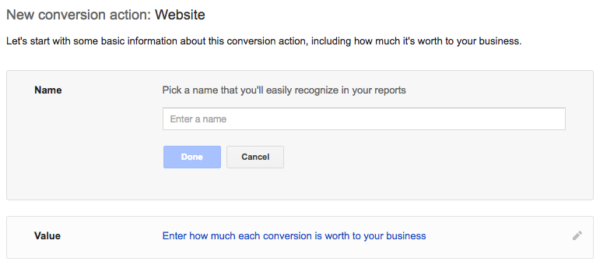
Next, plan out how you want to measure conversions. Whether you’re starting from scratch or looking to optimize your current account, check out these seven creative ways to track conversions for any retail business:
1) Store Visits
Historically, retail locations have had a very hard time tracking in-person conversions. But Google is finally tackling this issue with a new conversion metric called store visits. Store visits track people who have clicked on your ads and then later visit your retail location. It helps close the loop and track visitors from first click all the way until the time they step foot into your store. This new technology is one of the best and most effective ways to track conversions for retailers.
This new tracking method is incredible. It uses a combination of signals to measure these store visits including Google Earth, Google Street views, and GPS location signals, just to name a few. The not-so-great news about all of this? It’s brand new and not readily available to every retailer just yet.
Right now, store visit conversions are only available to retailers that meet these qualifications:
- Have multiple physical store locations in eligible countries.
- Receive thousands of ad clicks and many store visits.
- Have a Google My Business account linked to your AdWords account.
- Create each of your store locations in your Google My Business account.
Don’t meet all these requirements? Right now, you’re out of luck, but keep reading for other suggestions. Meet these requirements? Great! You’re on your way to having a more clear and concise understanding of your AdWords ROI. If you meet these requirements, you’ll have to reach out to Google AdWords rep to get this set up.
2) Appointment or Consultation Requests
Apart from tracking store visits, appointment requests can be one of the strongest indicators of intent to purchase for a retail business. While you don’t have to require appointments to be made, strongly encouraging appointments can be an incredibly helpful way to track your AdWords ROI. Depending on the nature of your business and your sales team’s ability to close, an appointment request can be a powerful tool to closing leads at a high rate.
One retailer that is really doing this right is BHLDN, a bridal boutique created by the popular clothing brand Anthropologie. You can see here that BHLDN leads some of their AdWords visitors right to this appointment page where they can essentially choose their own appointment path. Not only is BHLDN offering a store appointment as a way to capture qualified leads for their business, but they are also encouraging “stylist consultations” that position the appointment as less sale-focused and more education-focused. This gives them two opportunities to track highly qualified leads.
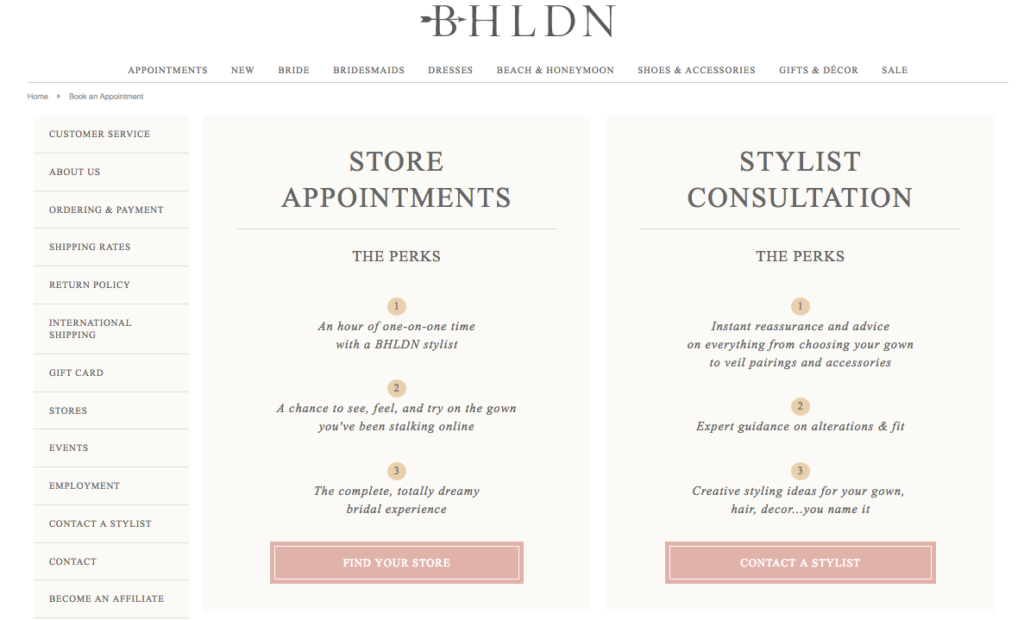
3) Quote Requests
Based on your retail business model, a quote request may be another great alternative for tracking AdWords conversions. This works great for salons, mechanics, pawn shops, etc.
To get the best results from this method, test various ad messages in order to find the right hook. You can test subjects like, “Get a free quote today!” or “Instant quotes over the phone!” Generally what I’ve found is that easier and simpler along with instant gratification will entice people to click and convert more.
Get creative! One of the best quote request landing pages I’ve seen is this one below from Cash Co Pawn Shop in City Heights, CA. It’s incredibly personable, and the paper is simple and clear of any other distractions.
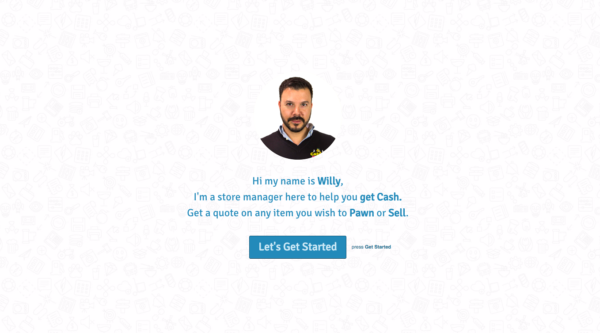
4) Calls – 30 Seconds or Longer
Calls can be another significant indicator for your business that someone is ready to buy or at least willing to learn more about your company. Call conversions are even more powerful today than ever before with so few people taking the time to place phone calls. It can be conversion gold!
Make sure to turn on call extensions on all of your ads to make it as easy as possible for a prospective customer to get in touch with your business. Google will help you set up this feature with a Google forwarding phone number.
You’ll also get the opportunity to track calls of a certain length. Consider how long a typical phone call lasts for your business. Quick phone calls less than 30 seconds may not be a great conversion metric, but longer phone calls often indicate stronger interest and curiosity in your business. You can even set up various phone call length conversions and values if you are seeing longer phone calls closing more sales than shorter ones.
5) Blog Subscribers
The next few examples are good ways to track top of the funnel leads, but most likely will have a much lower customer conversion rate than the ones listed above. Blog subscribers are conversions that you’ll probably want to assign with a lower value, but they still may be important for your business.
If you have a blog that allows for people to opt in with their email addresses, this could be a solid business lead for you. You could focus your marketing strategy towards setting up a powerful email nurturing campaign with your top blog posts to help move that person further down the funnel. These leads could also be added to your general marketing database to receive special promotions or announcements in the future. Regardless of what you end up doing with these leads, they can still prove to be valuable depending on the steps you take after they sign-up.
Salon Vason, one of the top salons in Miami, entices visitors with a pop-up when they first arrive to the site, encouraging them to join their database. These leads can and should be nurtured with an email campaign designed to inspire them to take action and make an appointment in the future.
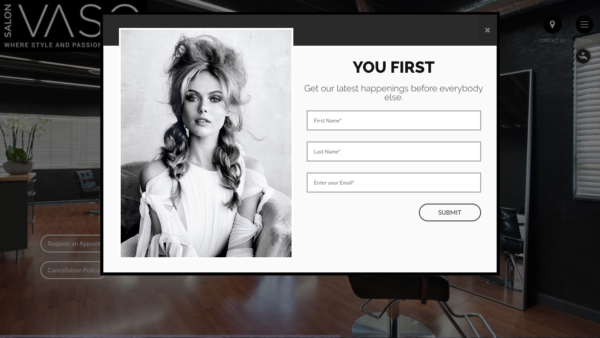
6) Newsletter Sign-Ups
Do you have a weekly, monthly or quarterly newsletter that you share with your database? Track conversions through newsletter sign-ups. These may be low quality leads, but they may have some weight on your business in the future if you target them correctly.
7) eBook And Guide Downloads
Writing eBooks and buying guides can be a helpful way to educate your leads and position yourself as a content expert. It’s also a great lead generating tool if your content is strong enough to be gated behind a form (a still highly debated but important topic today).
Yale Appliance is an example of a local business that does a really great job capturing qualified leads with their content. They have an extensive library of buying guides designed to help consumers purchase expensive and complex appliances. Yale Appliance has strategic AdWords campaigns set up that lead directly to these beautifully optimized landing pages (like the one below).
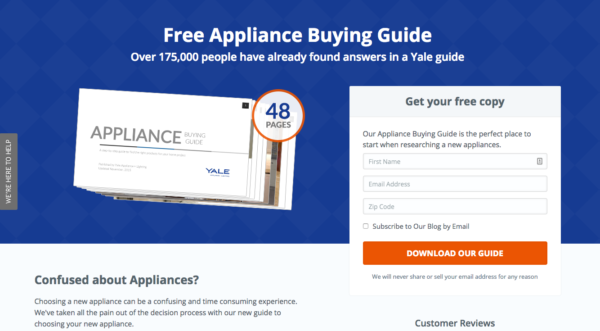
Tracking leads from eBooks and guides like the ones from Yale Appliance could be a great way to measure qualified leads for your business, especially when you use these leads strategically in the future. It can be a great indicator of which pain point your customer is trying to solve so you can target your content and lead nurturing efforts more specifically.





